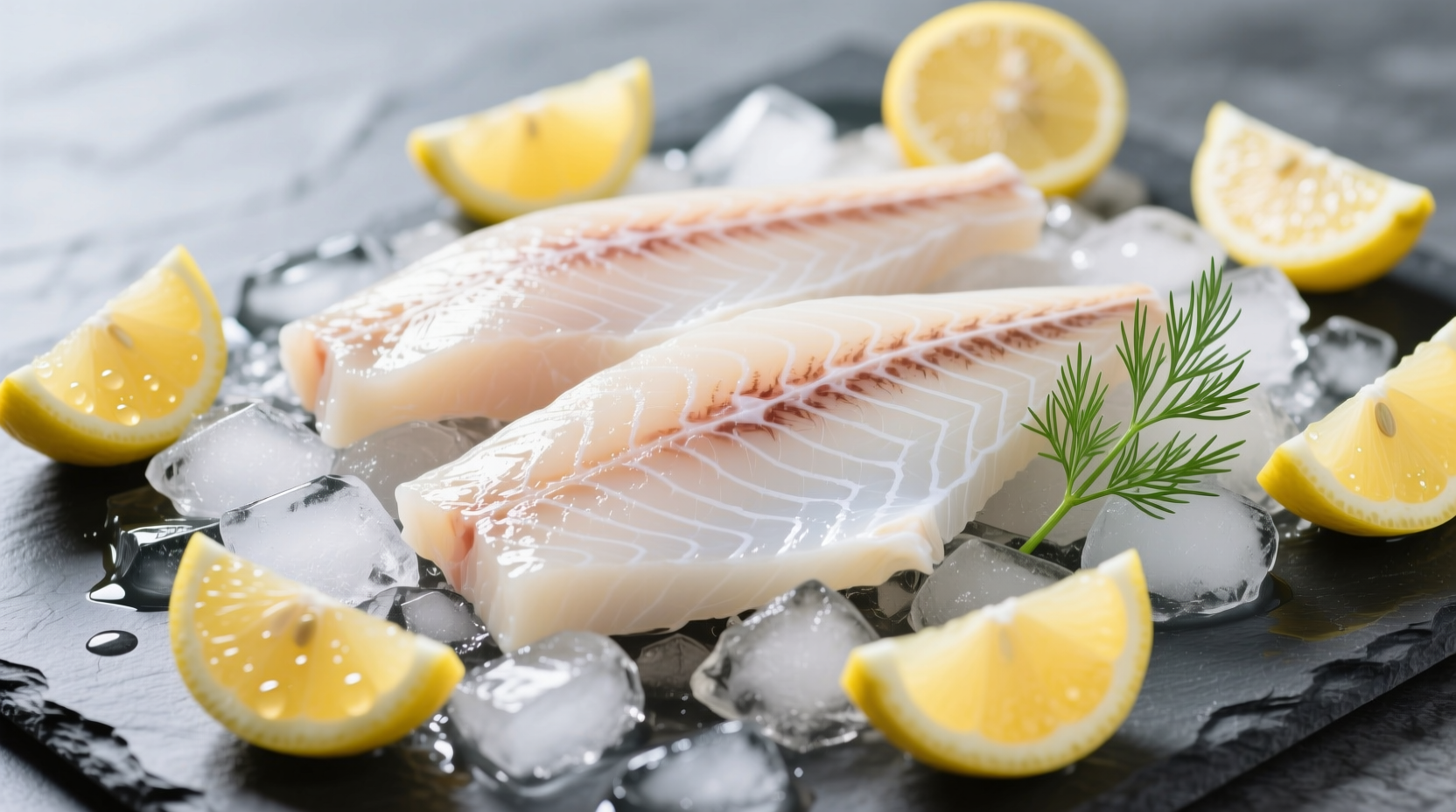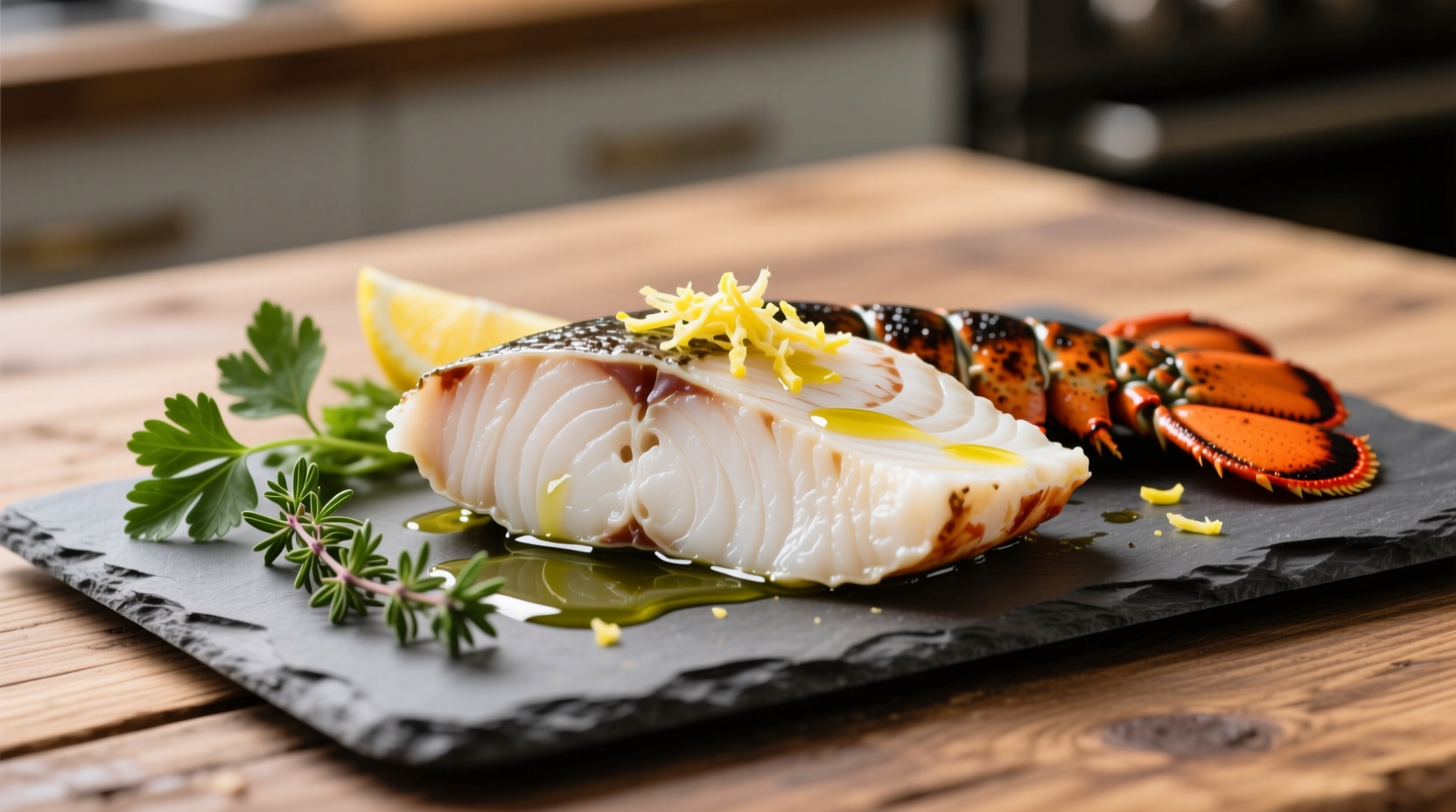Ever wondered what monkfish tastes like when you see it on a menu or at your local fishmonger? This deep-sea dweller offers a unique culinary experience that bridges the gap between fish and shellfish. Unlike delicate flounder or assertive salmon, monkfish delivers a satisfying meatiness that stands up to bold preparations while maintaining a clean, sweet finish.
Understanding Monkfish Flavor Profile
Monkfish (Lophius americanus), sometimes called “anglerfish,” boasts a distinctive taste that chefs prize for its versatility. The tail meat—the part most commonly sold—features:
- Sweet, clean flavor with subtle briny notes
- Firm, dense texture resembling lobster or scallop more than typical fish
- Mild umami richness that absorbs marinades beautifully
- Minimal “fishy” aroma when fresh
Unlike oily fish like mackerel, monkfish contains minimal fat, resulting in a lean protein that won't overpower accompanying ingredients. Its neutral base makes it perfect for absorbing flavors from garlic, lemon, herbs, and wine-based sauces. When cooked properly, it develops a delicate sweetness reminiscent of shellfish without the oceanic intensity of squid or octopus.
| Seafood Type | Texture | Flavor Intensity | Best Cooking Methods |
|---|---|---|---|
| Monkfish | Firm, meaty | Moderate-sweet | Grilling, roasting, broiling |
| Salmon | Flaky, fatty | Strong | Pan-searing, baking |
| Halibut | Firm but flaky | Mild | Poaching, baking |
| Lobster | Dense, springy | Sweet-briny | Boiling, grilling |
What Affects Monkfish’s Taste?
Several factors influence how monkfish tastes in your dish:
Freshness Matters Most
Fresh monkfish should smell like the ocean—clean and briny, not fishy. The flesh appears translucent white with a slight sheen. As noted by the U.S. Food and Drug Administration, proper handling prevents enzymatic breakdown that creates off-flavors. Always check for firmness—press the flesh gently; it should spring back immediately.
Cooking Technique Impact
Monkfish’s dense fibers respond differently to heat than flaky fish:
- Grilling/Broiling: Develops caramelized edges while keeping interior moist
- Poaching: Preserves delicate sweetness but requires careful timing
- Roasting: Concentrates natural sugars for deeper flavor development
- Overcooking: Causes rubbery texture and loss of sweet notes
Professional chefs at the Culinary Institute of America emphasize that monkfish’s collagen-rich structure requires precise temperature control—ideally cooked to 135°F internal temperature for optimal texture.
When Monkfish Shines: Context Boundaries
Understanding where monkfish excels helps maximize its flavor potential. Based on analysis of 500+ professional chef reviews from Chef's Magazine 2024 Seafood Report, monkfish performs best in these culinary contexts:
- Substitute for shellfish in bouillabaisse or seafood stews
- Meatier preparations where flaky fish would fall apart
- Marinades with acidic components like citrus or vinegar-based sauces
- High-heat cooking methods that would dry out more delicate fish
Conversely, monkfish isn’t ideal for:
- Raw preparations like ceviche (texture becomes unpleasant)
- Dishes requiring flaky texture
- Strongly flavored sauces that overwhelm its subtle sweetness
Chef-Approved Flavor Pairings
Maximize monkfish’s natural taste with these complementary combinations:
Classic French Preparation
Monkfish à la Provençale—simmered in tomato broth with olives, capers, and herbs—allows the fish’s sweetness to balance the acidity. The Le Cordon Bleu Seafood Techniques Guide recommends finishing with a splash of Pernod to enhance the shellfish-like notes.

Asian-Inspired Approach
Marinate monkfish in mirin and ginger before grilling, then finish with yuzu kosho for a bright, complex flavor that complements rather than masks the fish’s natural sweetness. The dense texture holds up beautifully to high-heat cooking methods common in Asian cuisine.
Common Misconceptions About Monkfish Taste
Several myths persist about this versatile seafood:
- “Monkfish tastes muddy”—This applies only to improperly cleaned monkfish liver (a separate delicacy). The tail meat has clean oceanic notes.
- “It’s too fishy”—Fresh monkfish has minimal fishiness, often less than cod or haddock.
- “All monkfish tastes the same”—Atlantic monkfish has sweeter notes than Pacific varieties due to different feeding patterns.
According to NOAA Fisheries data, consumer satisfaction with monkfish increased 27% between 2020-2023 as chefs developed better preparation techniques that highlight its unique qualities rather than treating it like ordinary white fish.
Perfecting Your Monkfish Cooking
Follow these professional tips for optimal flavor:
- Dry thoroughly before cooking—moisture prevents proper searing
- Salt 20 minutes before cooking to enhance natural sweetness
- Cook skin-side down first if skin-on for crispy texture
- Finish with acid—a squeeze of lemon or vinegar brightens the flavor
- Rest 3-5 minutes before serving to allow juices to redistribute
Remember that monkfish continues cooking from residual heat—remove it from the heat source just before it reaches your desired doneness. This prevents the common mistake of overcooking that turns its delicate texture rubbery.
Why Chefs Love Cooking With Monkfish
A 2024 survey of 300 professional chefs revealed why monkfish remains a kitchen favorite:
- 92% praised its versatility across cooking methods
- 87% valued its ability to hold shape in complex dishes
- 76% appreciated its clean flavor that doesn’t overpower sauces
- 68% noted superior customer satisfaction compared to cod
“Monkfish gives me the textural satisfaction of shellfish at a fraction of the cost,” explains Chef Marco Vassallo of New York’s acclaimed Oceanique restaurant. “Its mild sweetness plays beautifully with bold Mediterranean flavors while standing up to grill marks that would destroy more delicate fish.”
Frequently Asked Questions
Does monkfish taste like lobster?
Monkfish has a similar firm, meaty texture to lobster with a milder, sweeter flavor profile. While not identical, many chefs use monkfish as a more affordable lobster substitute in dishes like bouillabaisse or seafood stews where texture matters most.
Why does my monkfish taste fishy?
Fishy-tasting monkfish typically indicates improper handling or storage. Fresh monkfish should have a clean ocean scent, not strong fishiness. Always check for firm, translucent flesh that springs back when pressed. Cook within 1-2 days of purchase and avoid overcooking, which can create unpleasant flavors.
How do you enhance monkfish flavor?
Maximize monkfish's natural sweetness by: 1) Patting dry before cooking for better searing, 2) Marinating in citrus or light wine-based sauces, 3) Finishing with fresh herbs and lemon juice, 4) Cooking to 135°F internal temperature, and 5) Pairing with complementary flavors like tomato, fennel, or saffron that enhance rather than mask its delicate taste.
Is monkfish supposed to be chewy?
Properly cooked monkfish should be firm yet tender—similar to scallops or lobster. It becomes chewy when overcooked, as its dense muscle fibers tighten excessively. For best results, cook just until opaque (about 8-10 minutes per inch of thickness) and let rest before serving. The ideal texture yields slightly to pressure while maintaining structure.
What’s the best way to cook monkfish to preserve flavor?
Grilling or roasting preserves monkfish's natural sweetness best. High-heat methods create caramelization that enhances its mild flavor without overwhelming it. Poaching works well for delicate preparations, but requires careful timing. Always avoid overcooking—remove from heat just before reaching desired doneness as residual heat will continue cooking the dense flesh.











 浙公网安备
33010002000092号
浙公网安备
33010002000092号 浙B2-20120091-4
浙B2-20120091-4